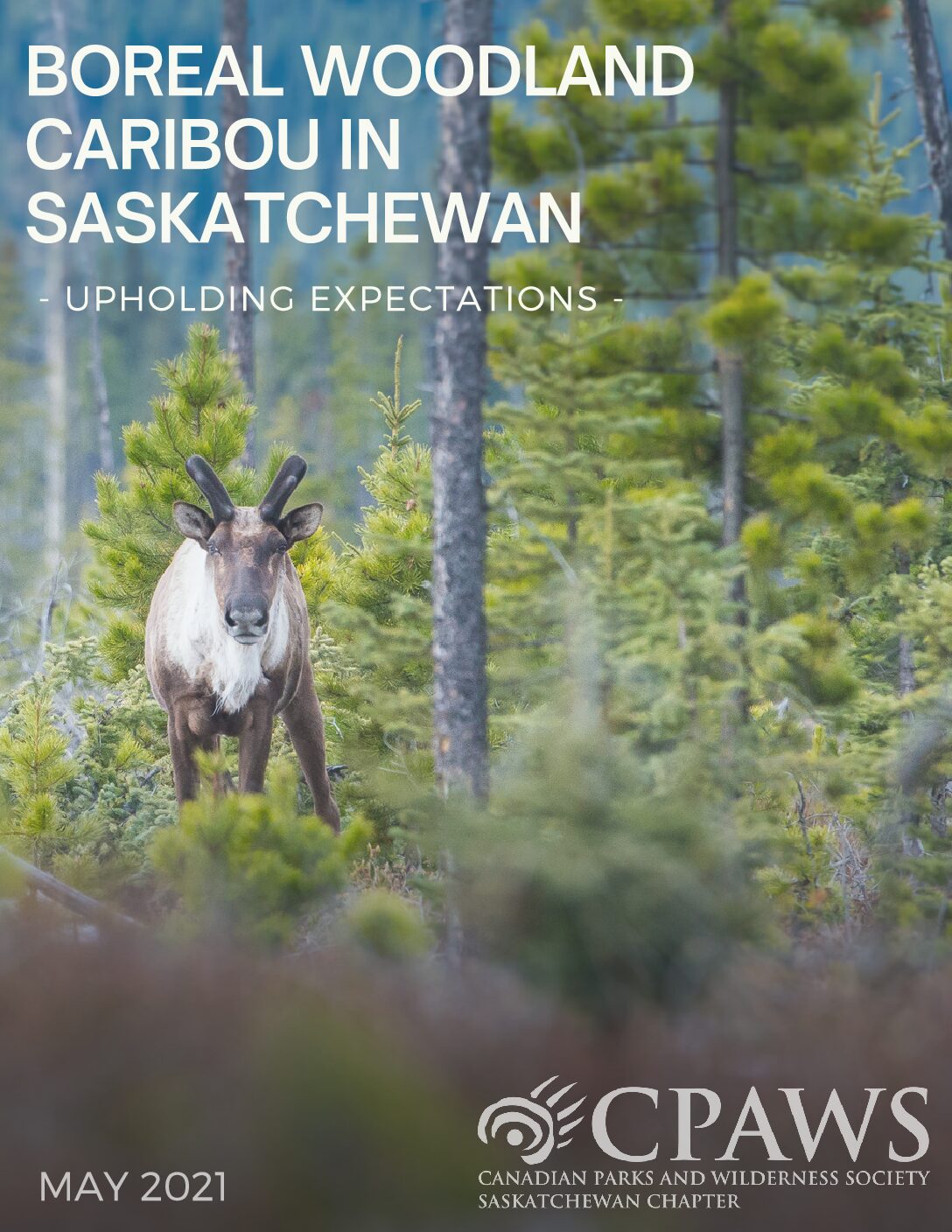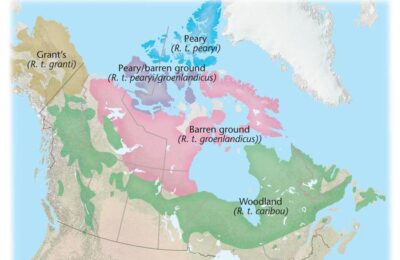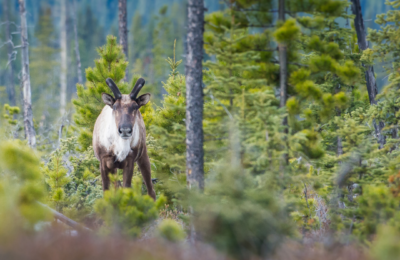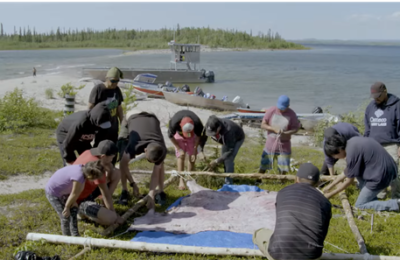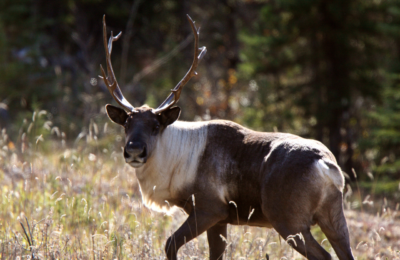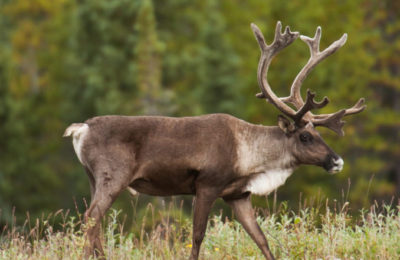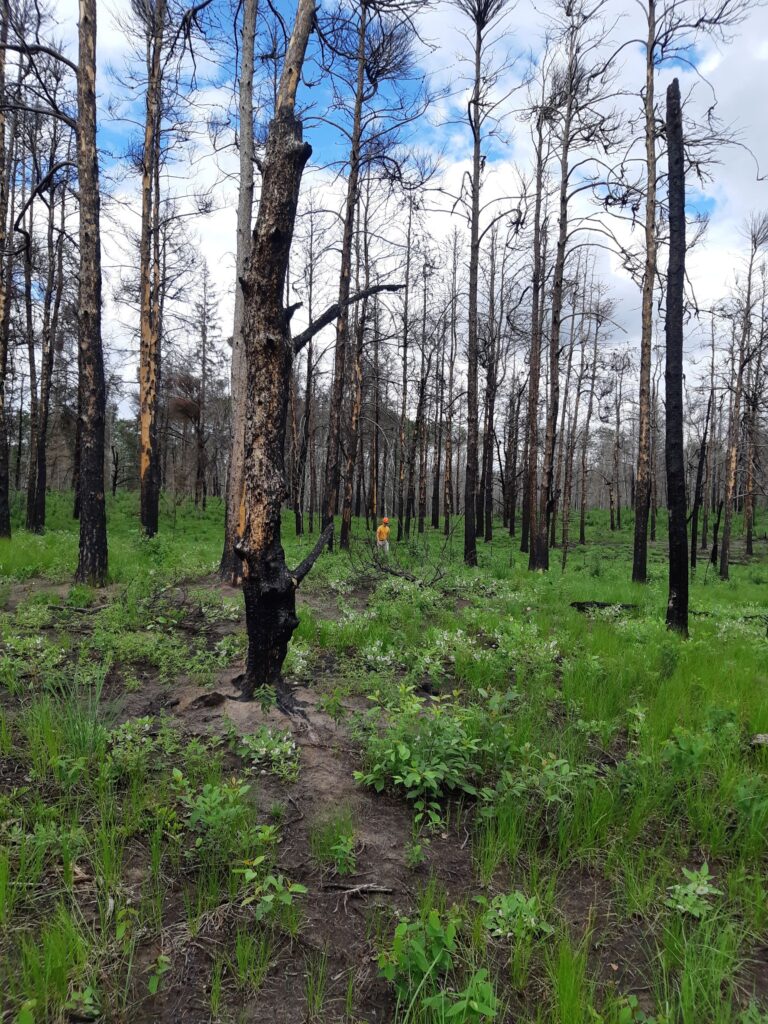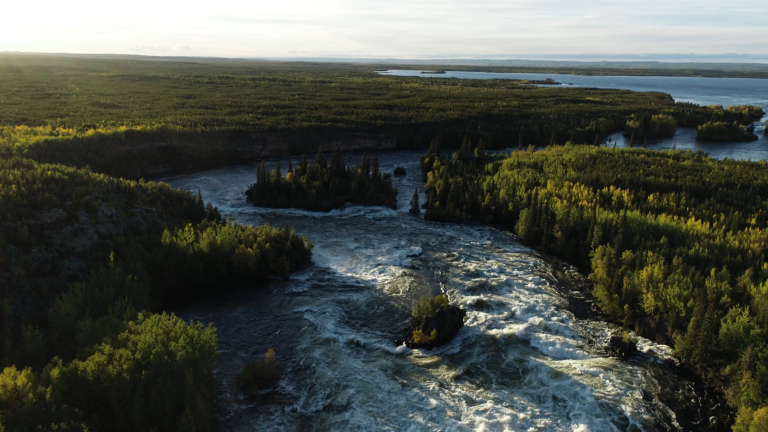Woodland caribou are one of several “umbrella species” in Saskatchewan: animals whose sustainability and population numbers are indicators not just of their own health, but of the overall wellbeing of the entire ecosystem.
That the woodland caribou numbers in Saskatchewan are dwindling suggests that the entire boreal landscape is suffering. Since Canada’s are some of the largest unbroken stretches of boreal forest left in the world, it is our duty to listen to what the caribou are telling us– and act as their voice and as a voice for the wild.
Habitat Loss & Expanding Industrial Development is a Serious Threat
Woodland caribou are vulnerable to disturbance from human activities that result in the loss of their preferred habitat or create new access into it. Such activities include forest harvesting that causes a temporary loss of habitat, and other industrial and urban developments that cause a permanent loss. Roads, trails, and seismic lines may create access for people and predators to caribou refuge, disrupting caribou from feeding, calving and resting, and increasing the vulnerability from predators. With their low reproduction rate the increased disturbance and predation may lead to a decline in caribou population levels.
Take Action
Protect Woodland Caribou in Saskatchewan
Conservation science tells us we must protect at least half of the Boreal in its natural state for it to remain fully functioning as a component of earth’s life support system.
A Species at Risk
Woodland Caribou have been listed under the Federal Species at Risk Act (SARA) since 2003. All species listed require a National Recovery Strategy. In 2020, the federal government amended the 2012 recovery strategy for Woodland Caribou. CPAWS acknowledges the progress made on the part of the federal government but encourages strong, science-backed commitments to ensuring that all Woodland caribou populations will not only survive, but thrive, in intact boreal ecosystems.

Human Activities
Human activities fragment the forest: Logging, road-building and other forms of development like mining and oil and gas development fragment the caribous’ boreal forest habitat. These activities lead to increased clearings and linear disturbances.



Increased Predator Access
At one time, caribou remained safe from predators by occupying intact continuous forest. However, increased clearings and linear disturbances allow predators such as wolves easy access to caribou herds. Clearings in the forest also attract other ungulates such as deer and moose, further gathering attention from wolf populations.



Competitors
Competitors and predators move in: When a forest is disturbed, and begins to regrow, it provides plenty of food for moose, elk, and deer. These ungulates thrive in new forests, and their increasing numbers eventually attract increasing numbers of their primary predator — the wolf.
What is Saskatchewan Doing?
In 2007, a recovery strategy was drafted by Saskatchewan to guide caribou survival into the future, and in 2012 the federal government lent support to the efforts of Saskatchewan with its own national “Recovery Strategy for the Woodland Caribou (Rangifer tarandus caribou), Boreal population”. The Conservation Strategy for Boreal Woodland Caribou in Saskatchewan was finalized in 2014. The ministry has initiated a project that will provide a better understanding of the complexities of Woodland caribou ecology, help to meet objectives identified in the provincial conservation strategy and federal recovery strategy, and assist the Province in carrying out its responsibility for managing the species and related habitat.
The Woodland Caribou Range Assessment and Planning project incorporates two key components: The range assessment, which will increase our understanding of Woodland caribou populations and their interactions with their environment within Saskatchewan, and development of range plans that will lead to better decisions involving habitat management and self-sustaining caribou populations.
For range assessment and planning activities related to Woodland caribou, Saskatchewan has been divided into the Boreal Shield (SK1) and Boreal Plain (SK2) conservation units as identified in the provincial conservation strategy and federal recovery strategy.
In recent years
In 2017, Saskatchewan released one of the first draft Caribou Range Plans in the country. By December 2019, Saskatchewan had released the final version of the SK2 Central range plan and a draft version of the West range plan.
By June 19, 2019, the Governments of Canada and Saskatchewan entered into a section 11 conservation agreement under SARA: the Woodland caribou: Boreal Population Conservation Agreement. One of many elements of the Agreement is the completion of the Range Plans, which has been completed for SK2 Central, but has yet to be completed for SK2 East and West despite commitments to do so by March 2020 and November 2019 respectively.
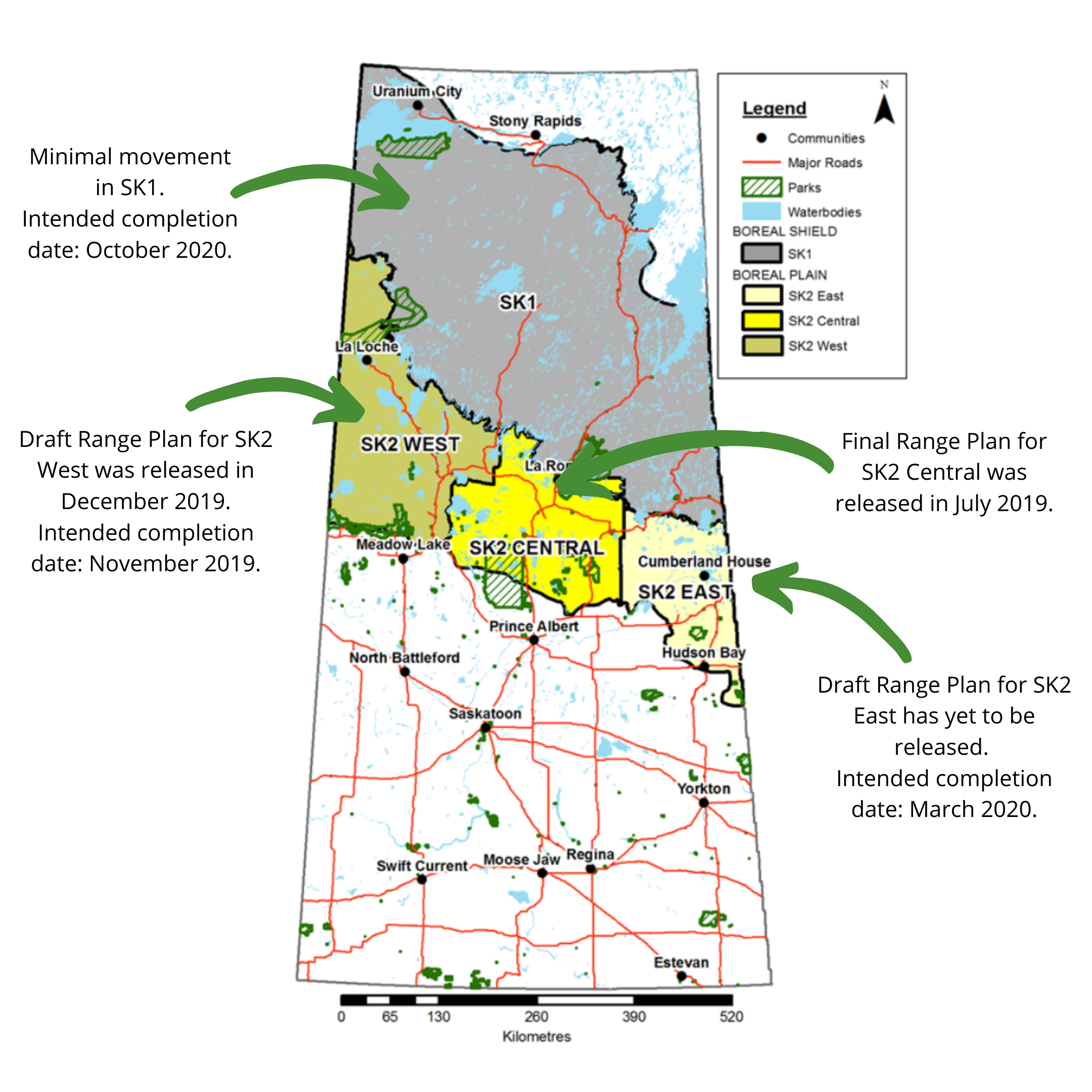


Upholding Expectations
In May 2021, CPAWS wrote up our concerns about protecting the integrity of the caribou range plans in Saskatchewan, the Section 11 Agreement, and the processes that protect endangered species in Canada. CPAWS has provided formal recommendations for both the provincial and federal government on how to move forward in caribou conservation across the nation with the goal of achieving the long-term persistence of the species.
Collaboration Builds Better Plans
Woodland caribou don’t care about borders and boundaries. They avoid natural disturbances, like forest fires and floods, and more unnatural ones like human activity and industrial development. They go where the food is, and to the areas where they feel safe to calve. For us, this means a big collaboration between CPAWS Saskatchewan and CPAWS Manitoba. We are working together with our provinces’ respective governments and local communities to act as the voice for the caribou who can’t speak for themselves.
Engagement with government, industry, First Nations, Métis and other stakeholders is key to the development of range plans. These plans are meant to guide restoration of damaged caribou habitat through: better forest management practices; ensuring that new or other industrial development sites do not pose a risk to caribou; managing road, trail, and seismic line activity; and planning future land use that sustains caribou range and a healthy boreal forest.
Range planning is more than just science based; we are working with the Indigenous communities of Northern Saskatchewan to collect Traditional Ecological Knowledge (TEK) and incorporate it with information from various research projects. The goal of all this is to maintain Woodland caribou within their current range in northern Saskatchewan and preserve their dwindling population numbers. A healthy caribou population is indicative of a healthy ecosystem overall.
Here, representatives from CPAWS SK and community members prepare to get an aerial view of the Saskatchewan River Delta- just one part of the boreal mosaic that woodland caribou find home.
CPAWS Across Canada
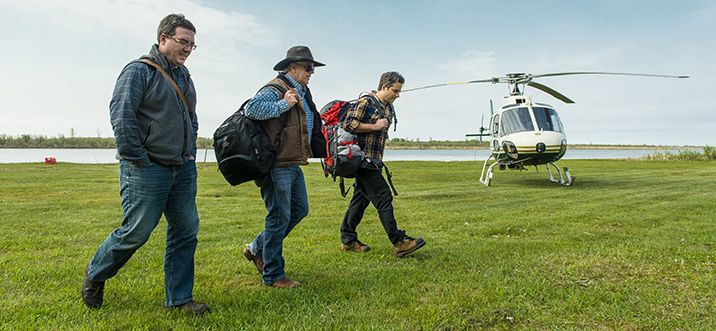


Our colleagues across the country are also fighting for Woodland caribou and the forest spaces that they need. Visit their pages to learn more about province-specific work.

